Embark on a journey into the captivating world of traditional jewelry with a focus on the illustrious Amazigh "Skhab" – an exquisite accessory intricately intertwined with Algerian culture and cherished by generations. The Skhab necklace, adorned with scented beads called 'skhab,' emanates a captivating fragrance when elegantly displayed. Typically, these beads are crafted from a paste comprising natural incenses, ambergris, ground cloves, musks, and wheat, meticulously prepared the night before a wedding to be adorned by the bride on her special day and throughout her married life. It is noteworthy that the specific ingredients used may vary depending on the region of origin and individual scent preferences (ground cloves, in particular, evoking reactions akin to the renowned "marmite" analogy).
In Algeria, the privilege of encountering these alluring pieces is granted within almost every jewellery store, as they are cherished and embraced as a customary accompaniment to traditional dresses, now worn both by single and married women alike. Historically, in Amazigh culture, the scented beads were meticulously strung together alongside prominent corals, silver beads, and a central silver pendant, typically the Tafust/Afus (or "khamsa" in Arabic), complemented by the diverse "melhfa-houli" existing from various regions such as Chaoui, Ouargla, and Mzab.
In contemporary times, particularly complimenting the Djebba Fergani/ Gandoura Annabi and Chedda from Tlemcen, the Skhab has been artfully combined with the Meskiya pendant, resulting in the recognisable Skhab shape prevalent today. The Skhab, rather than retaining its traditional small irregular bead or pyramid form, now adopts a blooming flower/leaf-like configuration that harmoniously accentuates the intricate designs adorning the Meskiya, as well as the embroidery on these distinguished dresses. The Meskiya, itself a historically significant piece of jewelry, not only serves as an adornment but also holds the purpose of perfuming the wearer, originally serving as containers for solid perfumes. Thus, the natural affinity and eventual convergence of the Skhab and Meskiya seem only fitting and inevitable.
SKHAB RECIPE

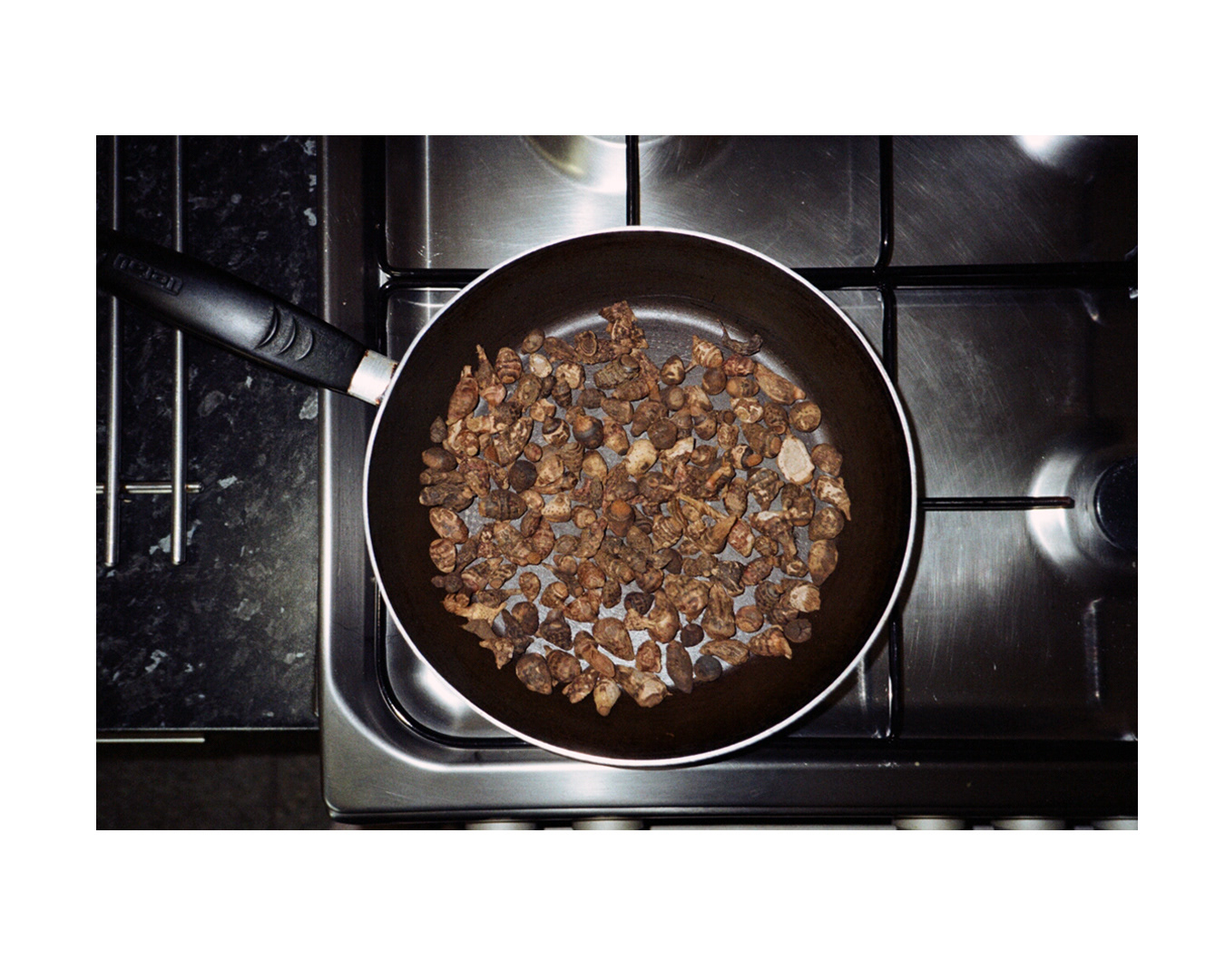
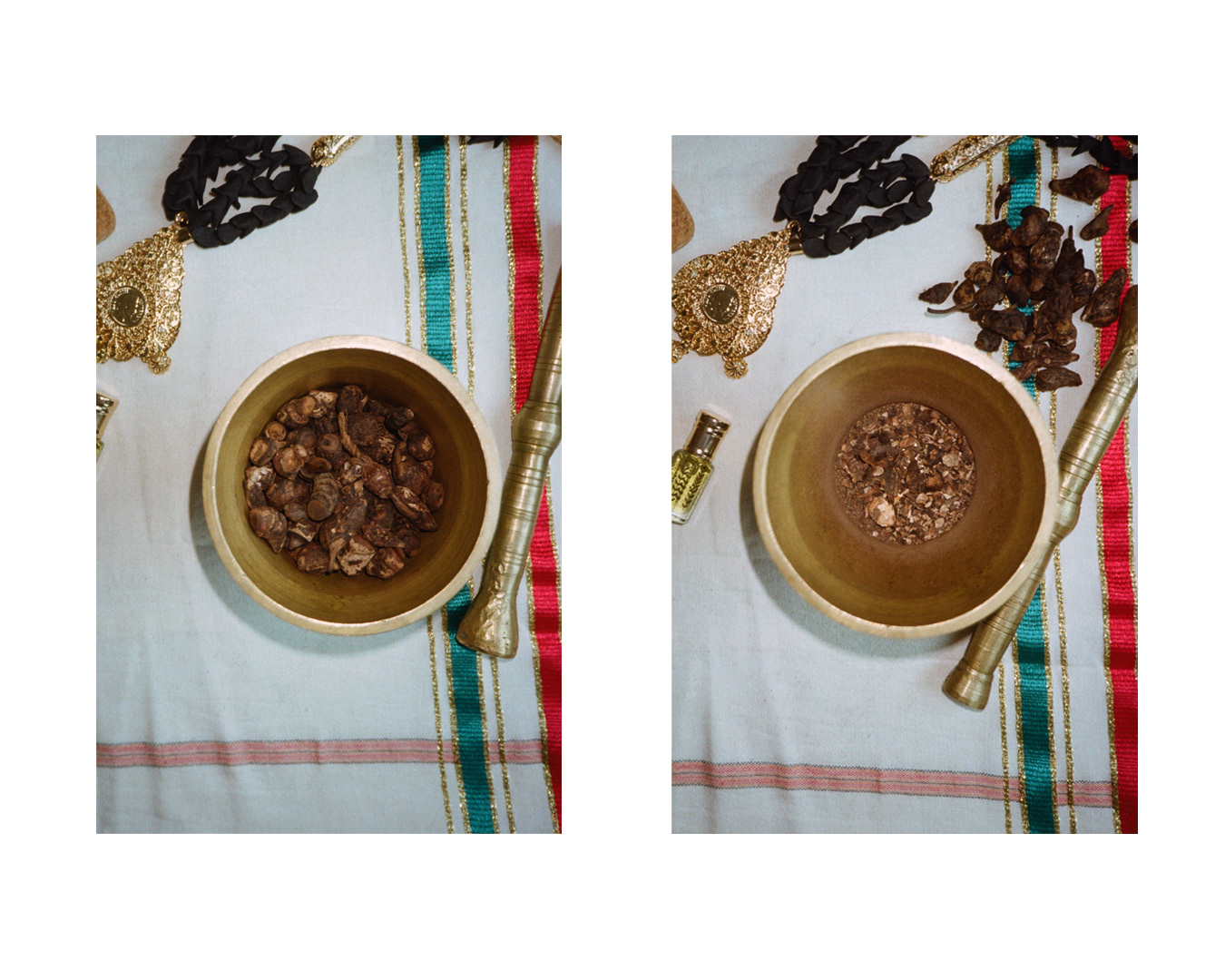
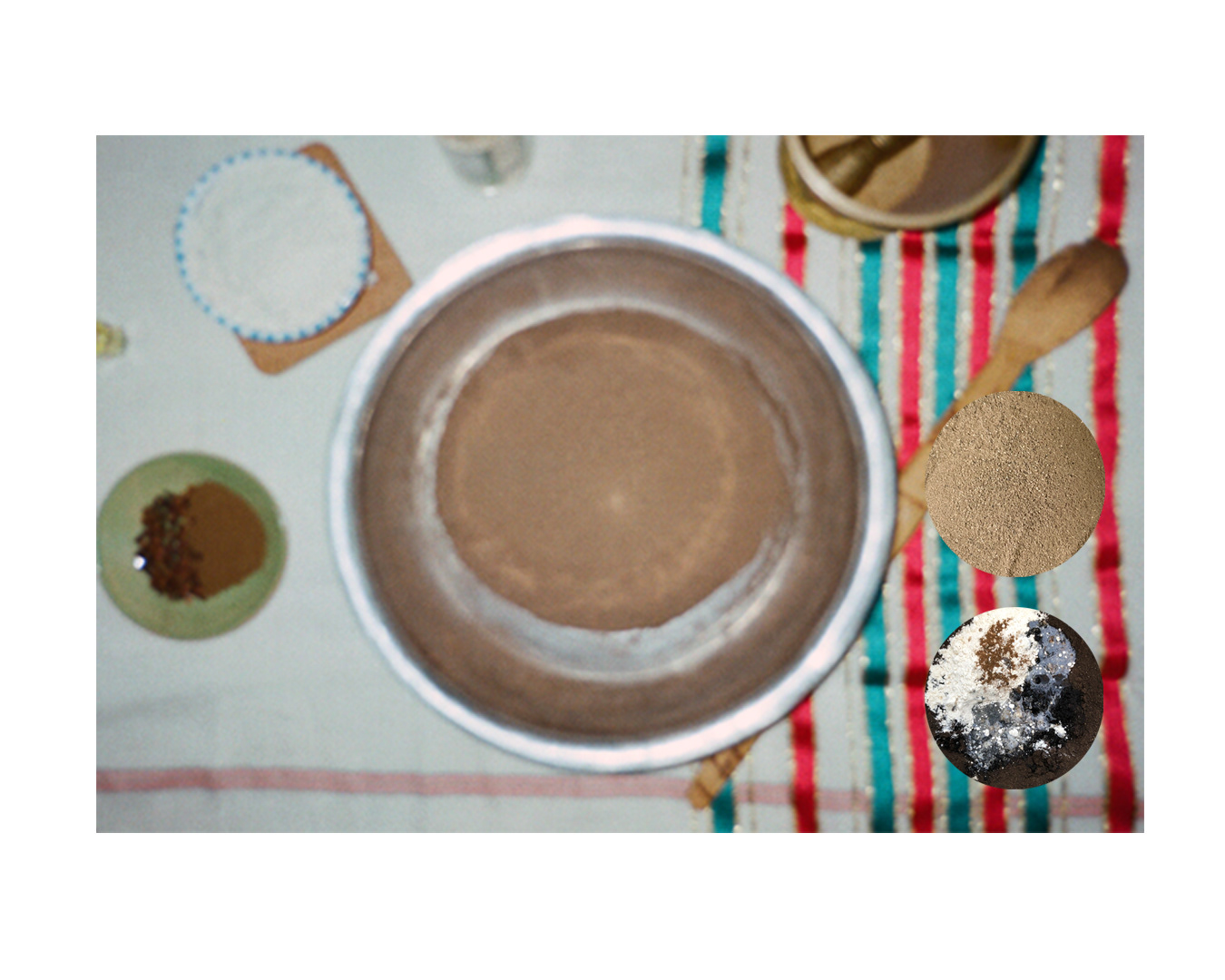

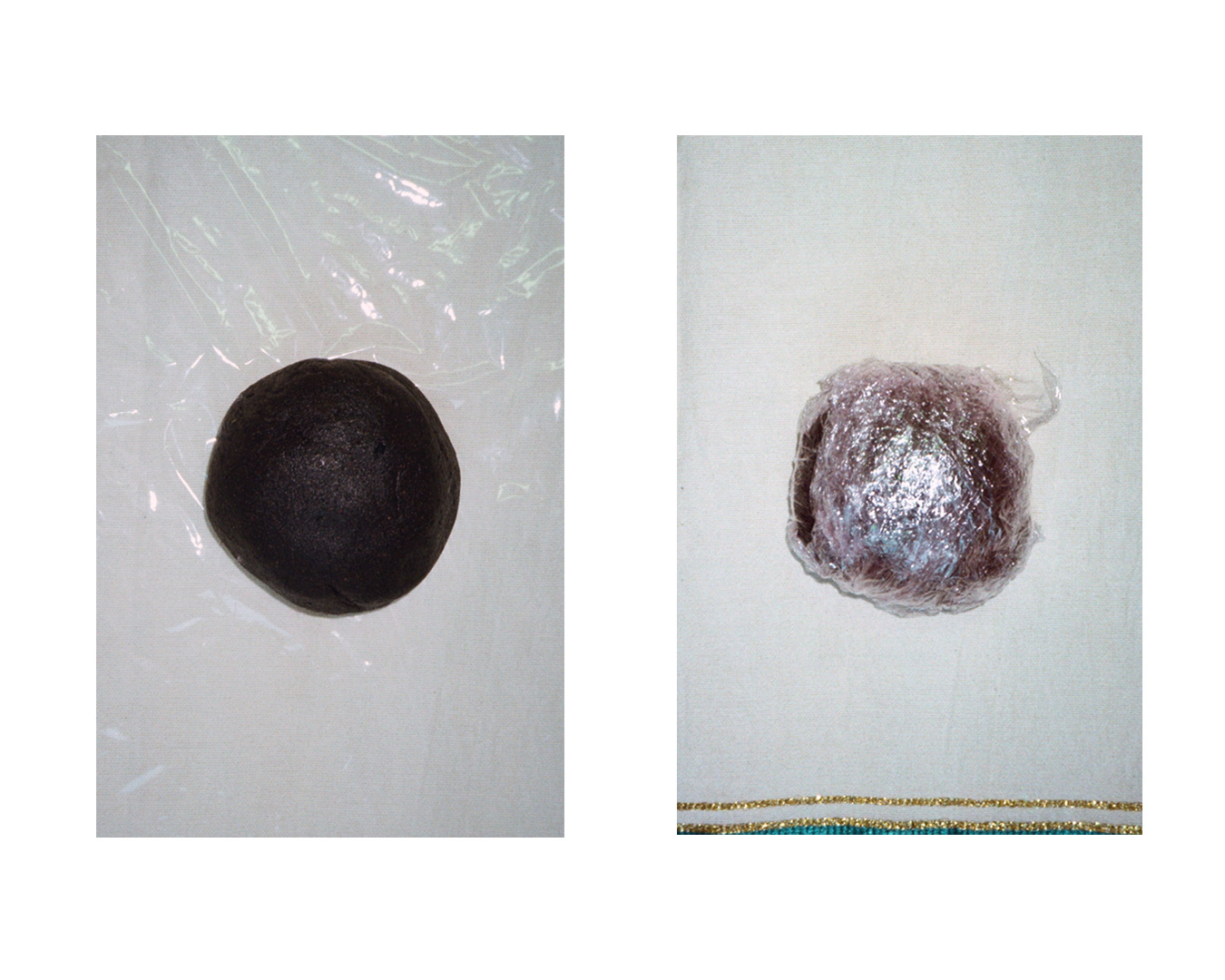
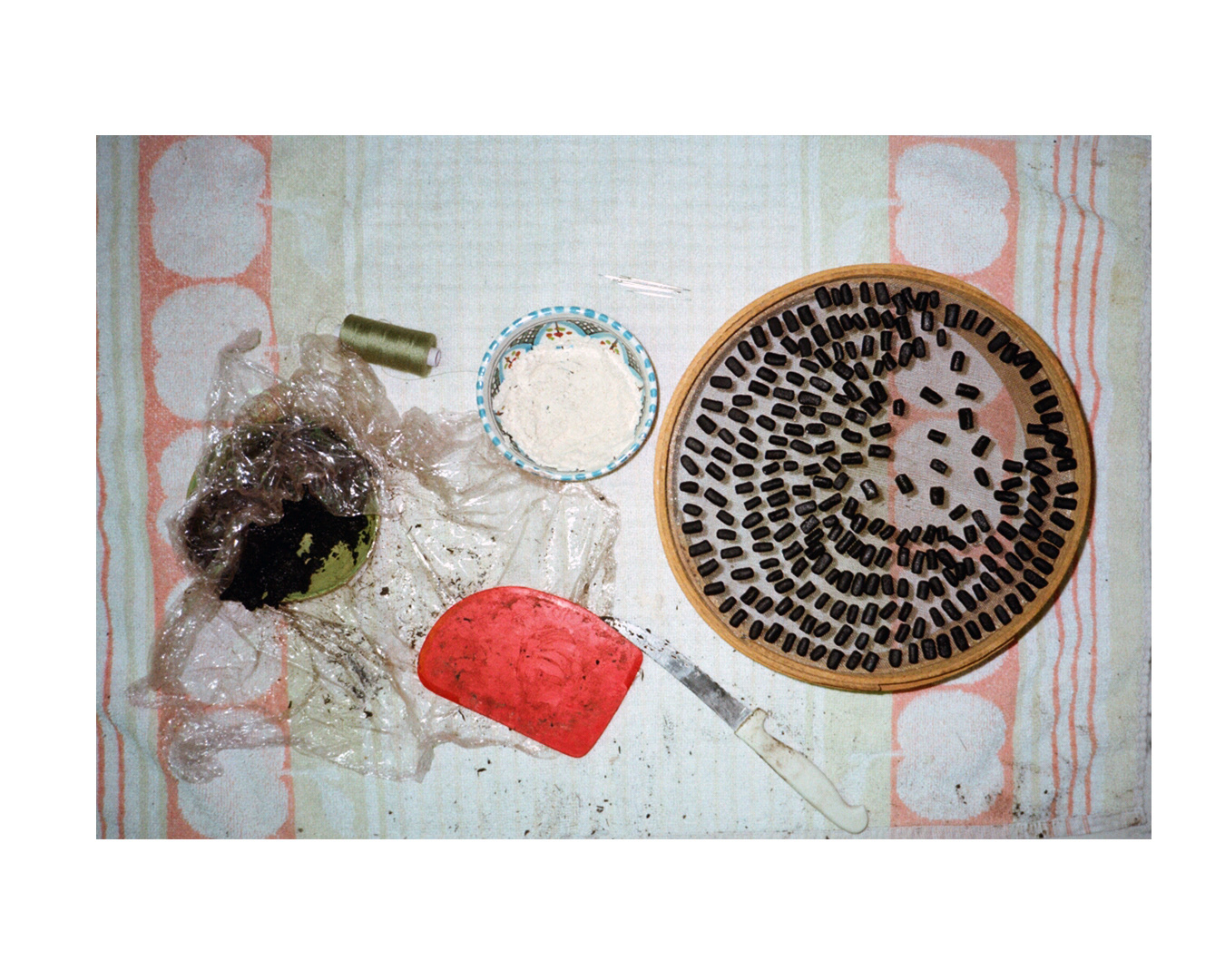
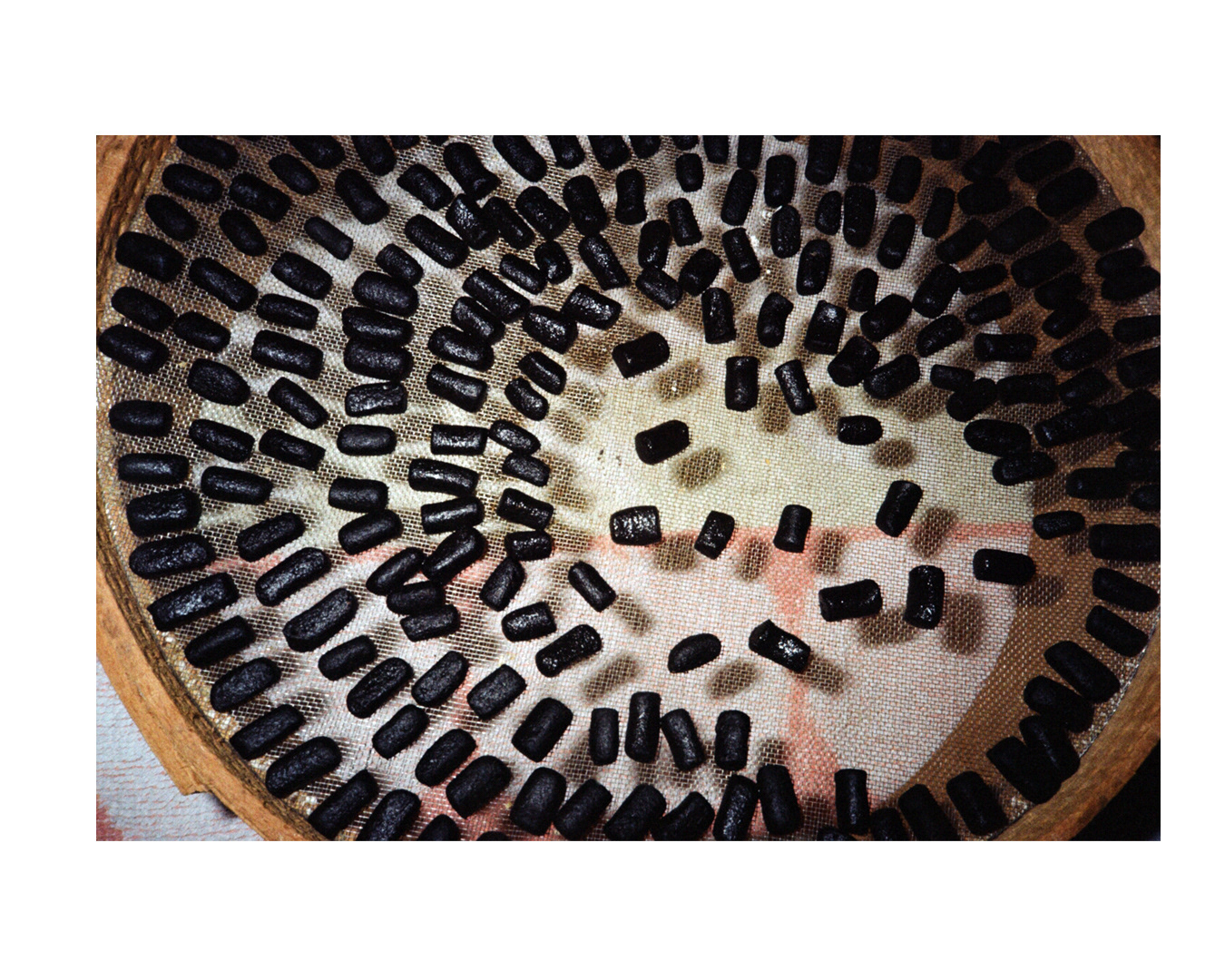
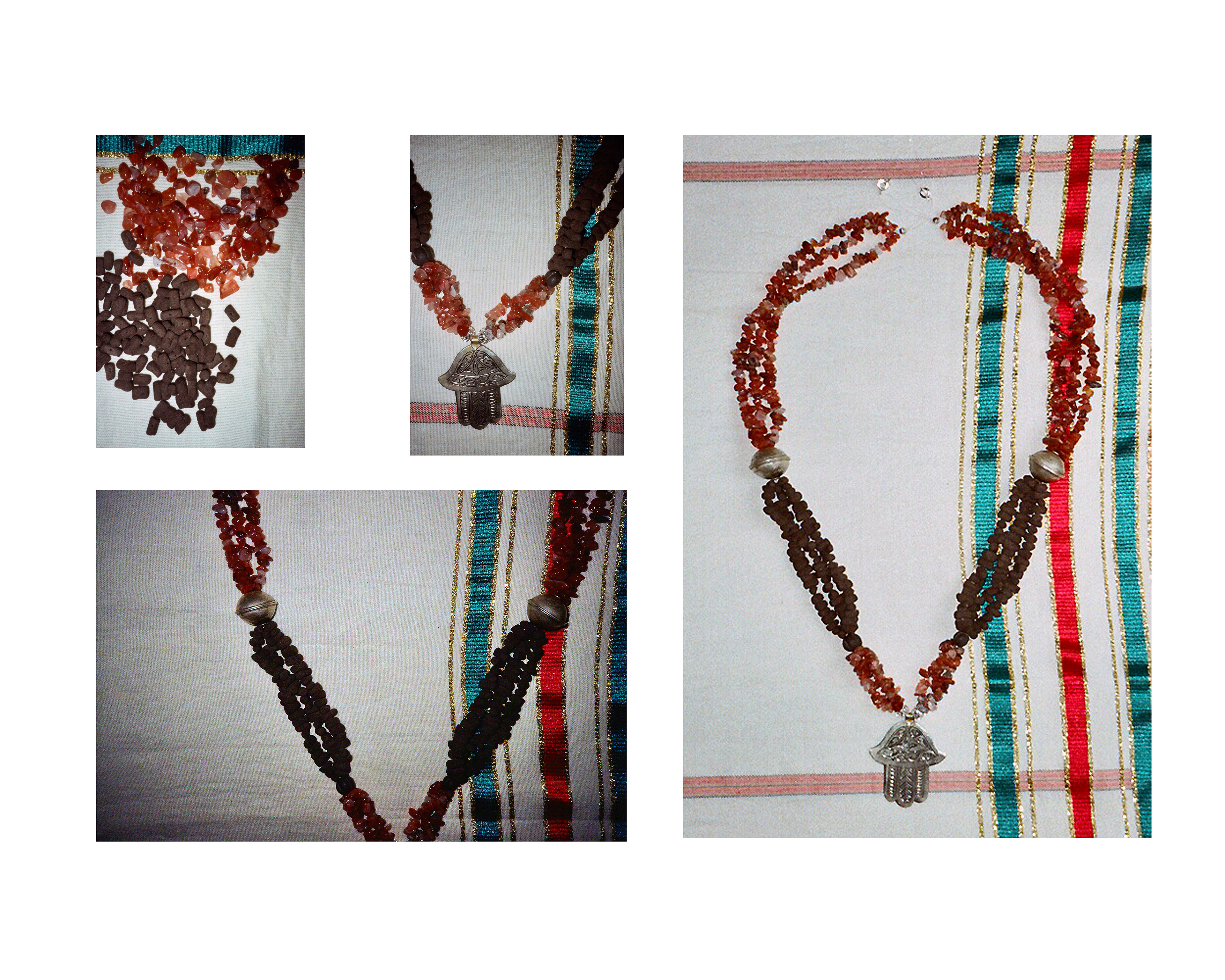
RECIPE
Ingredients list:
- Diguidjé (Cyperus Rotundus), 220 grams used
- Ground Mahleb, approximately 2 bags used
- Ground cloves, 1-2 table spoons
- Orange Blossom or Rose water
- Perfume oil of your choice
- Diguidjé (Cyperus Rotundus), 220 grams used
- Ground Mahleb, approximately 2 bags used
- Ground cloves, 1-2 table spoons
- Orange Blossom or Rose water
- Perfume oil of your choice
Equipment list:
- Mortar and Pestle or a Food processor/grinder
- Roasting pan
- Mixing bowl
- Mortar and Pestle or a Food processor/grinder
- Roasting pan
- Mixing bowl
1. Commence the process by emptying the roots into a pan and placing it on the stove. Roast the roots while continuously stirring until the desired color is achieved. Traditionally, Skhab paste displayed a brown hue, indicating a short roasting time, whereas the more contemporary black beads require longer roasting. Allow the roots to darken over the stove for the desired effect.
2. Once the roots have reached the desired color, let them cool for a minute or two before transferring them to either a mortar and pestle or a food processor. Grind the roots continuously until they break down into smaller pieces, resembling a fine powder akin to flour.
3. At this stage, you have the option to roast the powdered form for further color alteration or proceed directly to the mixing bowl. Add the perfume oil, ground cloves, ground mahleb, and orange blossom or rose water to the powdered roots. Using your hands, blend the ingredients thoroughly until a smooth ball of Skhab paste is formed. Cover the mixture with cling film and allow it to solidify in the refrigerator.
4. After approximately two days in the fridge, the paste should be firm enough to shape as desired. Embrace your artistic freedom at this point and create the traditional Amazigh designs of small rectangular beads or opt for the contemporary leaf-like pyramid shapes, often paired with Meskiya pendants. Additionally, in Tunisia, the beads take on circular, oval, flat designs, such as half moons, fish, khamsa, and flowers, catering to those with a preference for less abstract shapes. Enjoy the creative process and craft the Skhab beads according to your artistic vision.
Collage of Skhab Ingredients, scanned images 2022